Here is a quote about the nature of spirituality, from the Indian philosopher Ramkrishna Paramhansa.
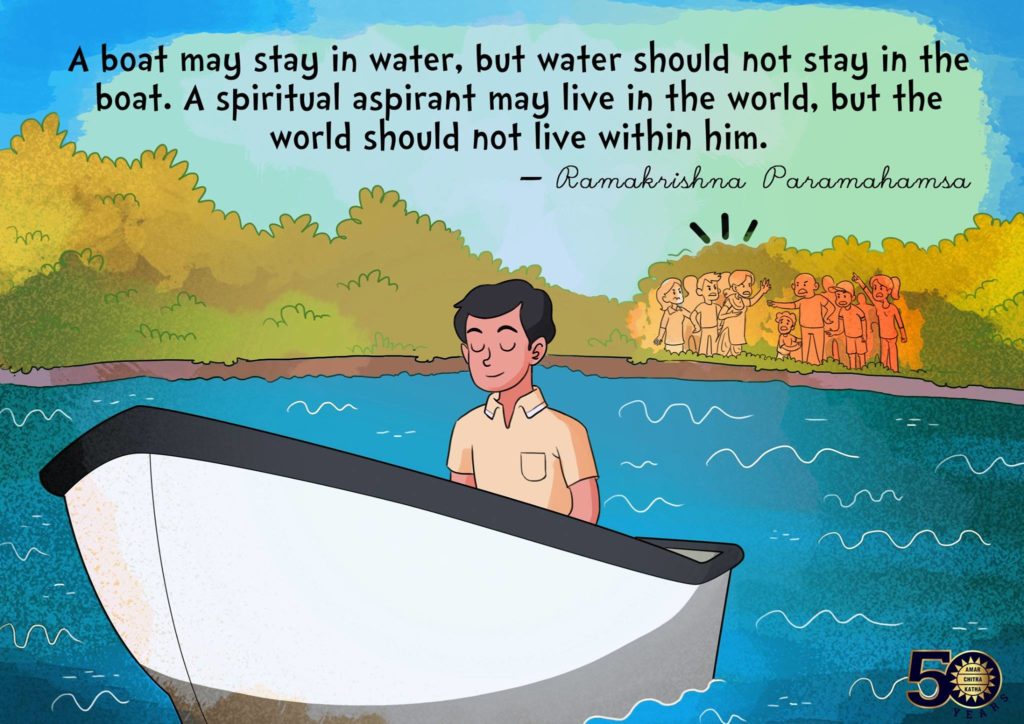



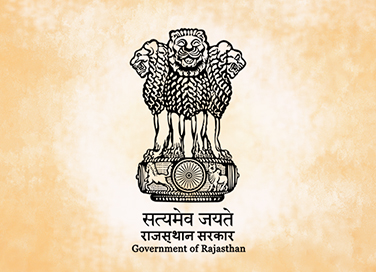
By Srinidhi Murthy
Formed on 30 March, 1949, Rajasthan is the largest Indian state by area, with Jaipur as its capital. It shares borders with the states of Haryana and Uttar Pradesh to the northeast; Madhya Pradesh to the southeast; Gujarat to the southwest; and Punjab to the north. The name Rajasthan is derived from the Sanskrit words ‘Raja’ (king) and ‘Sthana’ (land), translating to ‘The Land of Kings’. 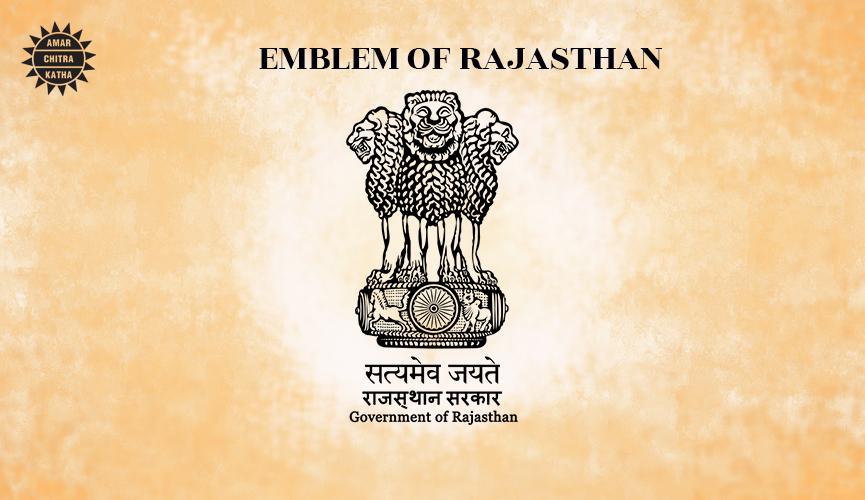
The history of this state dates back to thousands of years. It can be classified into three major eras:
Rajasthan started out as part of several republics like the Malavas, Arjunyas, Yaudhyas, Kushans, Saka Satraps, Guptas, and Hunas. For a while, it belonged to the Gupta dynasty.
Then, around 700 AD, Rajput clans began ascending to power. The Gurjara-Pratiharas ruled Rajasthan from 750-1000 AD. They kept the Arab invaders at bay in the Sindh region (present-day southeastern Pakistan). But their power eventually declined and other clans such as the Chalukyas, Parmars and Chauhans fought for supremacy.
During the 11th century, the Chauhan dynasty, with their capital at Ajmer (and later, Delhi), became the major power in the eastern region. In the First Battle of Tarain, Prithviraj Chauhan, the then-ruler, defeated Muhammad Ghori, a Sultan from the Ghurid dynasty. In 1192, Ghori defeated Chauhan, establishing Muslim rule in northern India.
Mughal forces began to subdue states that belonged to Rajputs, expanding their own territory. At the beginning of the 16th century, under the leadership of Rana Sanga of Mewar, the Rajputs began to rise to power. Then, Sanga was defeated in a battle with the Mughal emperor, Babur.
During the 16th century, Akbar gained control over the region through a series of marriage alliances with Rajput princesses for himself and his heirs. But some Rajput rulers like Rao Chandrashekar Rathore (Marwar), Rana Udai Singh (Mewar), and Maharana Pratap (Mewar) remained at constant war with Akbar. The influence of both the Rajputs and Mughals can be seen in the architectural landscape of Rajasthan.
The famous battle of Haldighati between the Mughal forces and Maharana Pratap took place in 1576, in which Rana Pratap was severely injured. His horse, Chetak, carried his master safely away from the battle but soon collapsed. There is still a monument constructed by Pratap at the place where his loyal horse died.
Akbar, the most famous of the Mughals, unified the different parts of Rajasthan into one province. When the Mughal empire began to decline after the death of Aurangzeb, great-grandson of Akbar, the Maratha empire began to gain control over the region in the early 18th century. During the reign of Peshwa Baji Rao I of Pune, he expanded to the north of Rajasthan and merged with the Rajput kingdoms.
Then, a new chapter in Indian history began with the arrival of the East India Company. In the 19th century, the Rajputs had been drained in terms of finances and military force, after continuous wars with the Marathas. To stabilise their kingdoms, they joined hands with the British, accepting their control over external affairs in exchange for internal autonomy. Thus, the Britishers subdued the power of the Marathas and united the Rajput states into a single province.
Rajasthan remained under British rulership until India gained its independence in 1947.

Rajasthan is known for producing some of the country’s bravest and most valiant freedom fighters.
Rao Gopal Singh Kharwa (1872-1939), was a ruler of Kharwa state near Ajmer, in Rajasthan. He was sentenced to four years of imprisonment for organising a revolt against the British.
Sagarmal Gopa (1900-1946), was a freedom fighter from Jaisalmer and an active participant in the non-cooperation movement of 1921. He was burnt to death in prison on 4 April, 1946. Post-independence, the government issued a postage stamp in his honour.
Daulat Maal Bhandari (1907-2004), was a freedom fighter. He organised the ‘Azad Morcha’ in Jaipur and staged satyagraha. He was imprisoned for nine months. After independence, Bhandari became the Chief Justice of Rajasthan High Court in 1968.
Janki Devi Bajaj (1893-1979), was one of the prominent female freedom fighters from the region. She was imprisoned for her participation in the Civil Disobedience Movement of 1932. She was awarded the Padma Vibhushan in 1956.
Swami Keshwanand (1883-1972), was a social reformer and freedom fighter from Sikar District in present-day Rajasthan. He participated in the Non-Cooperation Movement of 1921 and was imprisoned for it in Ferozepur (in present-day Punjab), for two years.
After 1947, the princely states of Rajasthan were slowly integrated into a single entity. They were grouped into small unions, then merged with the remaining Rajput states to create Greater Rajasthan in 1949.
Today, Rajasthan is home to eight UNESCO World Heritage Sites. It is known for its magnificent palaces, museums, and temples. Tourists flock to its offerings like Jaipur (known as the Pink City, because of the dominant colour of its buildings) and Udaipur (known as City of Lakes). The Ranthambore Tiger Reserve, temple town of Pushkar, and Chittorgarh Fort are other famous landmarks of Rajasthan.
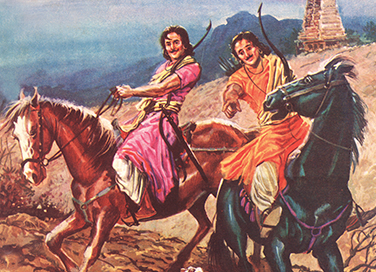
By Srinidhi Murthy
Hakka and Bukka, the valiant brothers from Warangal, overcame every hurdle thrown their way, to become the founders of one of the greatest Indian empires – Vijayanagara.
In 1310, Malik Kafur led the army of Ala-ud-din Khilji to capture the fort of Warangal. Though the army of Warangal fought back bravely, King Pratapa Rudra was forced to accept defeat in the end. As an act of surrender, Pratapa Rudra sent a golden image of himself, with a gold chain around the neck, to Malik Kafur. Malik Kafur happily informed Khilji that the doors had opened for them for their conquest of the south. However, soon hope emerged again in the king’s mind, with the death of Khilji. Unfortunately, things began to go downhill once again for the king, when he refused to pay tributes to the new sultan, Ghiyas-ud-Din. In retaliation, Ghiyas ud-din invaded Warangal. The king was defeated by Ghiyas-ud-Din and at the end of the war, the sultan’s army rode away in triumph, taking with them rich booty from Warangal.
Hakka and Bukka were the sons of Sangama, a chieftain of Warangal. They introduced themselves to Pratapa Rudra and demonstrated their loyalty to him. Meanwhile, the army of the sultan invaded Warangal again, when Pratapa Rudra refused to pay tribute even after his defeat. Hakka and Bukka joined the battle and fought bravely for the king. One night, a rumour about Ghiyas-ud-Din’s death spread rapidly among the soldiers of Warangal. Hakka and Bukka convinced Pratapa Rudra to use this opportunity to spread the rumour to the enemy camp too, in order to demoralise them. Their strategic plan worked as most of the military chiefs in the sultan’s army believed the rumour. They left with their men for Delhi, without even informing their commander.
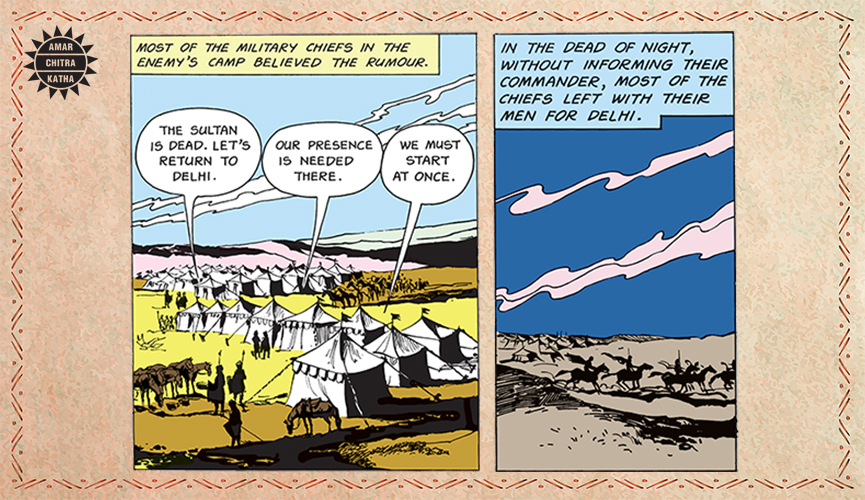
Though Pratapa Rudra gained victory over the army of the sultan, the threat of invasion still lingered around Warangal, even after two years. When the city was attacked again by the sultan’s army, the king was outnumbered and captured by his enemies. Hakka and Bukka tried to impart courage into the hearts of their fleeing soldiers but to their dismay, they learnt that Pratapa Rudra had killed himself on his way to Delhi, to escape the humiliation of imprisonment. Soon, the dejected brothers met the Prince of Kampili, on their way to the south. The prince introduced them to his father, King Kampili Deva. A few days after the arrival of the brothers in Kampili, Baha-ud-din, the nephew of the new sultan, Muhammad-Bin-Tughlaq, arrived at the court of Kampili Deva. Baha-ud-din had incurred the wrath of his uncle and sought refuge from the king. Moved by pity, Kampili Deva promised protection to the distressed Baha-ud-din.
When the sultan sent him a message to surrender his nephew to him, Kampili Deva refused to betray Baha-ud-din. So, Tughlaq’s army attacked Kampili and was defeated, twice. Though he emerged victorious twice, Kampili Deva shifted the capital to Anegundi. As suggested by his council, this city was impregnable and could withstand any attacks in future. However, the battles between Kampili Deva and the army of the Sultan seemed never-ending. In the final battle of Anegundi, losses were severe on both sides. At dawn, the ladies of the royal family underwent jauhar by entering into fire. The next day, Hakka and Bukka rode with the prince to face the army of the sultan. Unfortunately, both the brothers were wounded in battle and fell unconscious. When they gained consciousness, they found that the battlefield was filled with corpses along with the bodies of Kampili Deva and the prince. They lamented over the death of the heroes, who fought bravely against the army of the sultan. Then, they went to Hoysala, where Baha-ud-din had been sent for his safety.
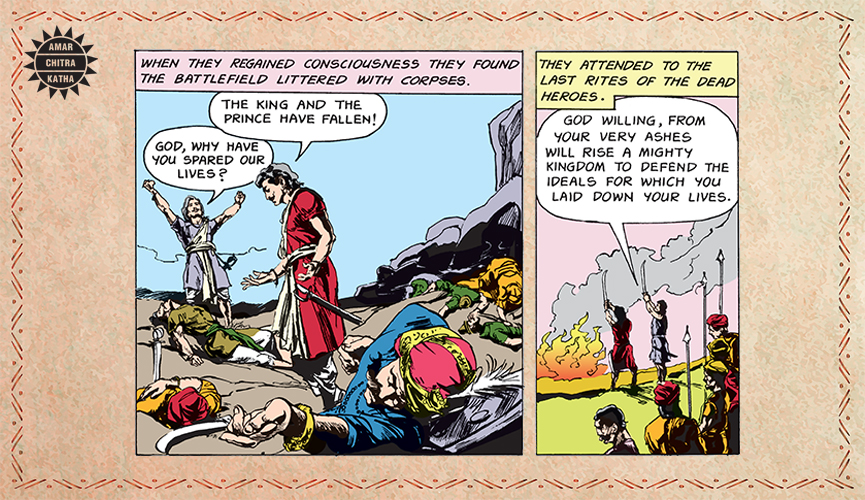
On their arrival, the Hoysala king shared some more bad news with them. He told them that Baha-ud-din had been taken away when Tughlaq’s army had invaded Hoysala. The Hoysala king was impressed by Hakka and Bukka’s determination to regain their lost territories, even after facing defeats at Warangal and Kampili. The two brothers left Hoysala and went into hiding to escape from the soldiers of the sultan. During this time, they met Sage Vidyaranya, who decided to help them in raising their army.
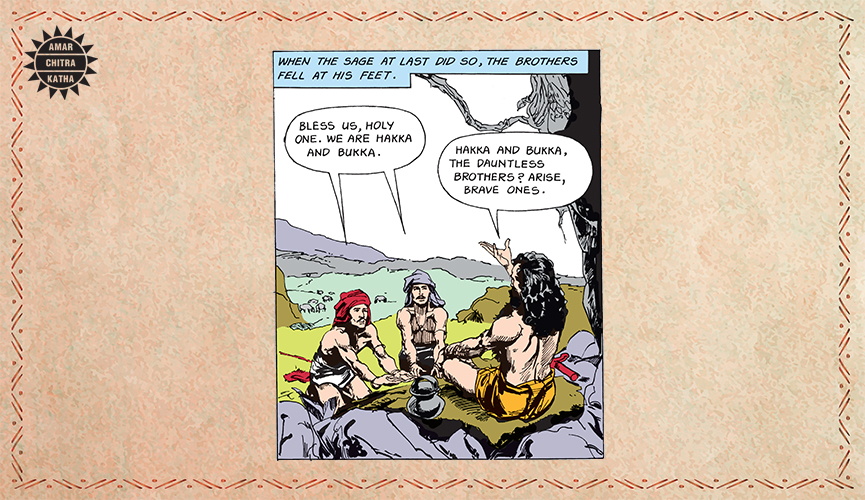
Vidyaranya showed them a secret passage, where they could train thousands of soldiers without raising any suspicion. He also told them that they could train men who came to temple, through the secret passage. Their plan worked as thousands of men were trained secretly by Hakka and Bukka. With the blessings of Vidyaranya, Hakka and Bukka captured the fort of Anegundi at night. The people of Anegundi gave a rousing welcome to Hakka and Bukka when they entered the city.
A few days later, Hakka and Bukka crossed the Tungabhadra River while out on a hunt with their dogs. Their dogs chased a hare. The hare ran fast, but came to a sudden halt at a particular place and bravely fought the dogs back. When the brothers reported this incident to Vidyaranya, he said that the aura of that place must have evoked bravery in the hare. He also suggested that Hakka and Bukka build a kingdom at the same spot.
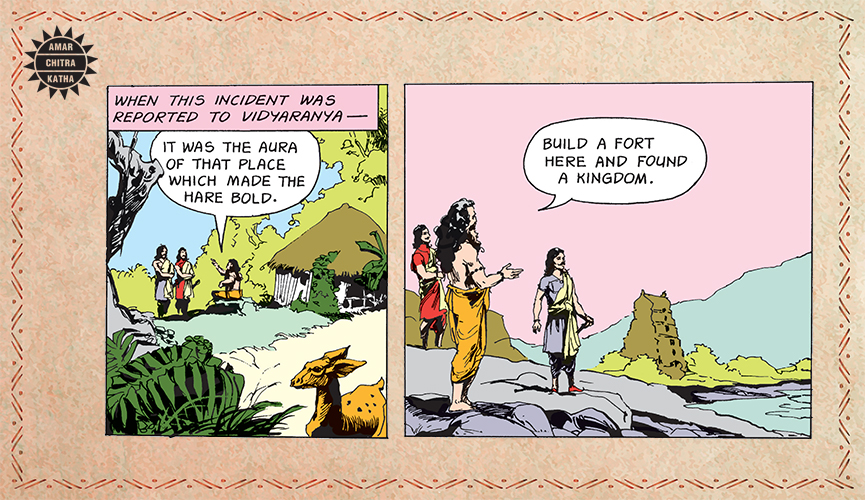
Later, Vidyaranya rejected the brothers’ request to name the city after him. Instead, he named the city Vijayanagara, the City of Victory. With the name Harihara Raya I, Hakka became the first king of Vijayanagara, a small kingdom that eventually rose to become one of the mighty empires in Indian history.
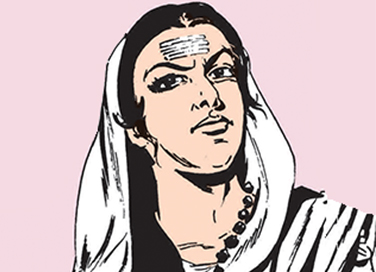
By Srinidhi Murthy
Chennamma, the queen of Keladi, effectively took over the administration of Keladi after her husband’s death. She reigned justly for over 25 years. Read on to know how this determined queen saved both Rajaram, the son of Chhatrapati Shivaji, and Keladi from the wrath of Aurangzeb.
Somashekhara Nayak was the king of Keladi, a kingdom in the Malnad area. In 1663, at the behest of his ministers, the king married young Chennamma, the daughter of a merchant, in a joyful wedding ceremony. However, there was one man who was unhappy with the royal marriage – Bharama Mahuta, a close friend of the king – who was secretly gathering support to seize the throne. He was worried that this marriage would provide an heir to King Somashekhara, thus foiling his plans. Years passed and the young Chennamma grew into a confident, wise and able queen.
The couple was happy, but the king longed for a child who would be his heir. Somashekara Nayak shared his worries with Bharama Mahuta. Devious Bharama saw this as an opportunity to manipulate the king. He convinced the king that he could obtain an heir by drinking a secret potion. Somashekhara Nayak was to leave for war soon and Bharama assured him that the potion would be ready by the time he came back. After a few weeks, the king returned triumphantly and received a warm welcome at home, after conquering the kingdom of Belur and Kannatur. That night, Bharama Mahuta gave the king his potion before he retired to his bed.
The king woke up delirious and screaming in the middle of the night. The horrified Chennamma immediately summoned the physician. As he took his dying breaths, the king whispered about his need for an heir and the potion, alerting Chennamma to foul play. The next morning, Chennamma summoned Bharama Mahuta and had him arrested for the king’s murder. She bitterly told the terrified Bharama that he had become a traitor after he poisoned the king and he too would meet death for his terrible sins. Although she was in mourning for her husband, Chennamma knew that she was now responsible for the safety and well-being of the citizens of Kelad and that she must take charge soon.
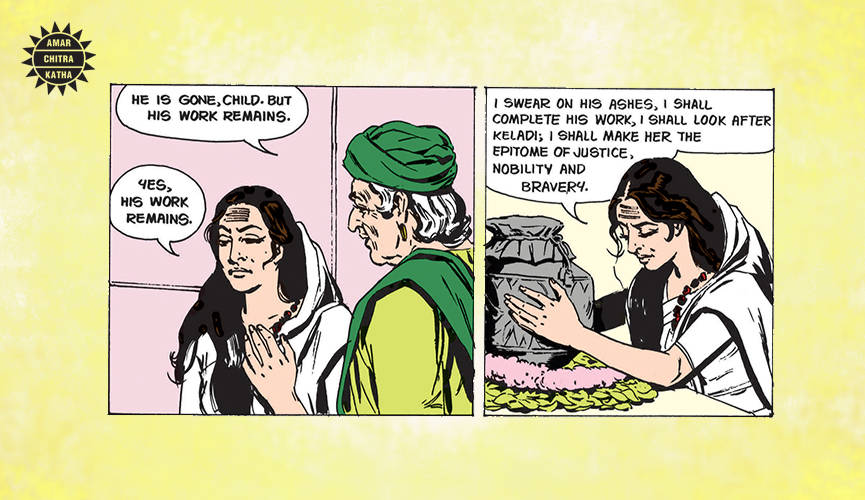
Over the next few weeks, every powerful minister proposed a different successor to the queen. Though the queen promised that she would consider each of their proposals carefully, the ministers became impatient and plotted to remove Chennamma from the throne. Amidst this chaos, the queen received news from her spies that the Bijapur army was on its way to attack Keladi. Chennamma tried to convince her council that their first priority at such a time was to repel the invader, not decide the next ruler of Keladi. However, Thimmanna Nayak, the commander-in-chief, walked out of the meeting, declaring that he could not fight for a kingdom without a ruler. Chennamma did not give up. She appealed directly to the army and the people and encouraged them to fight for Keladi. She also informed them that she would fight for her kingdom alongside them. Motivated by the queen’s speech, the people and the army of Keladi fought bravely against the huge army of Bijapur. Despite their efforts, the Bijapur army forced its way through and captured the Bidanpur fort. When the army entered the vanquished city, they realised that the queen had escaped with her citizens along with the jewels and money in the royal treasury.
Chennamma, with her people, took refuge in the fortress of Bhuvanagiri, deep in the forest. One day, the queen was surprised to see Thimmanna Nayak in her fortress. The commander-in-chief apologised for his behaviour and sought the queen’s forgiveness. Chennamma forgave him and Thimmanna gathered the chieftains and citizens from the surrounding parts of Bhuvanagiri and trained them for the war against the Bijapur army. Soon, the Keladi army attacked their enemy and freed Bidanpur from the captors. In 1971, Chennamma was crowned the queen of Keladi. She later adopted a young boy, Basava Nayaka, and trained him to become the next ruler of Keladi. Meanwhile, rebellious Keladi chieftains and neighbouring kings, joined hands with Chikkadevaraya Wodeyar, the king of Mysore, and planned various attacks on Keladi. Chennamma fought back bravely and won numerous wars against the Mysore army. The Queen treated her prisoners kindly and won the admiration of her enemies. Finally, Keladi and Mysore signed a treaty of friendship, which brought peace and harmony between the two kingdoms.
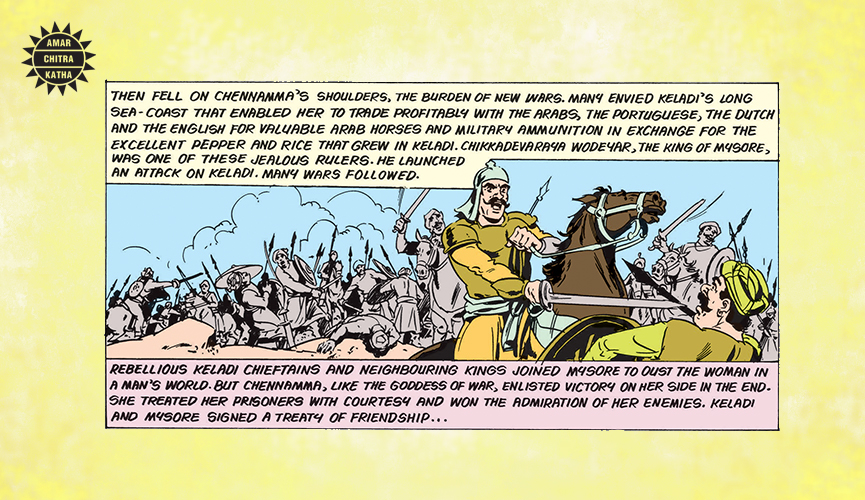
One day, during her daily alms-giving, Chennamma saw a young monk approaching her. The monk bowed to her and introduced himself as Rajaram, son of Chhatrapati Shivaji. He told her that the Mughal emperor, Aurangazeb had sent an army to kill him after he had killed his step-brother, Sambhaji. Rajaram also added that every southern ruler had denied him permission to pass through their kingdom for the fear of Aurangazeb. He requested the queen to permit him to pass through her kingdom, and seek temporary refuge in the fort of Jinji. Chennamma agreed. Soon, the Mughal army, under Jaan Nisar Khan, marched towards Keladi to find Rajaram. Aurangazeb also sent Chennamma a letter threatening her and asking her to surrender Rajaram. Chennamma boldly responded, informing Aurangzeb that Rajaram was not in her kingdom and that he had passed safely through Keladi. Before the queen’s letter could reach Aurangazeb, the Mughal army attacked Keladi.
The Keladi soldiers fought bravely against the Mughal invasion. Soon, the war was halted due to heavy rains. Along with the rains, the unfamiliar forest areas and illness among their soldiers became a major setback for the Mughals. One day, Jann Nisar Khan received a message from Aurangazeb, informing him that Rajaram was in Jinji. The Mughals decided to proceed to Jinji instead and therefore proposed a peace treaty with Keladi. Chennamma was relieved that her kingdom was safe. She knew that Jinji was well fortified and prayed for Rajaram’s safety.
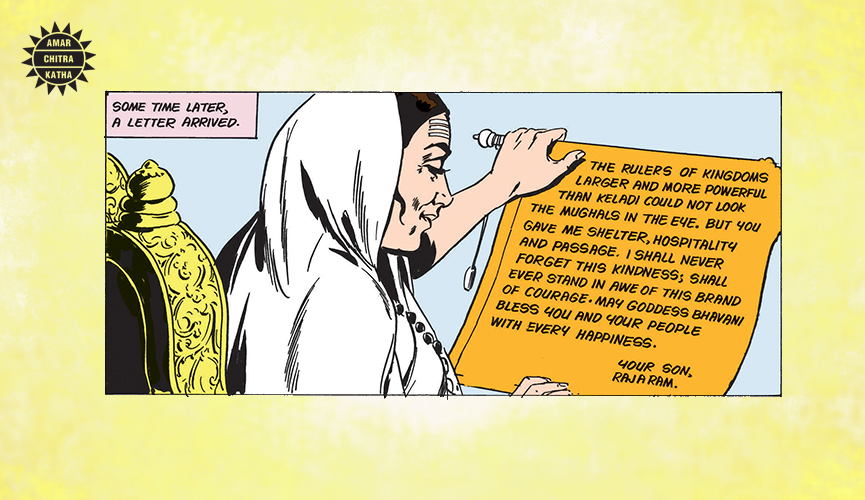
Sometime later, Rajaram wrote a grateful letter to the queen, thanking her for giving him shelter, hospitality, and the passage which even the rulers of larger kingdoms had refused. Chennamma ruled Keladi justly for 25 years and was succeeded by her son, Basava Nayaka.
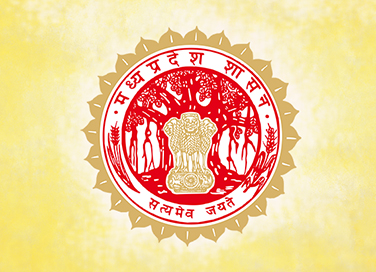
By Srinidhi Murthy
Madhya Pradesh is the fifth-largest Indian state by population and the second-largest by area. The region has been a witness to the bravery of freedom fighters like Chandra Shekhar Azad, Tatya Tope, Rani Lakshmi Bai and Tantya Bhil, who fought against the British. Read on to know more about the history of Madhya Pradesh.
All of modern-day Madhya Pradesh was part of the Mauryan Empire, established by Chandragupta Maurya in 322 BCE. This mighty empire declined after the death of Chandragupta Maurya’s grandson, Ashoka. After that, various dynasties ruled parts of, or all of Madhya Pradesh, from the 2nd century to the end of the 10th century. The Satavahana dynasty of Northern Deccan and the Saka dynasty of the Western Satraps fought for control over Madhya Pradesh during the period between the 1st and 3rd centuries. The region also witnessed the rise of Rajput clans, namely Paramaras of Malwa and the Chandelas of Bundelkhand, between the 9th and 14th centuries. The Chandelas, who ruled between the 9th and 13th centuries, built the famous Khajuraho temples.
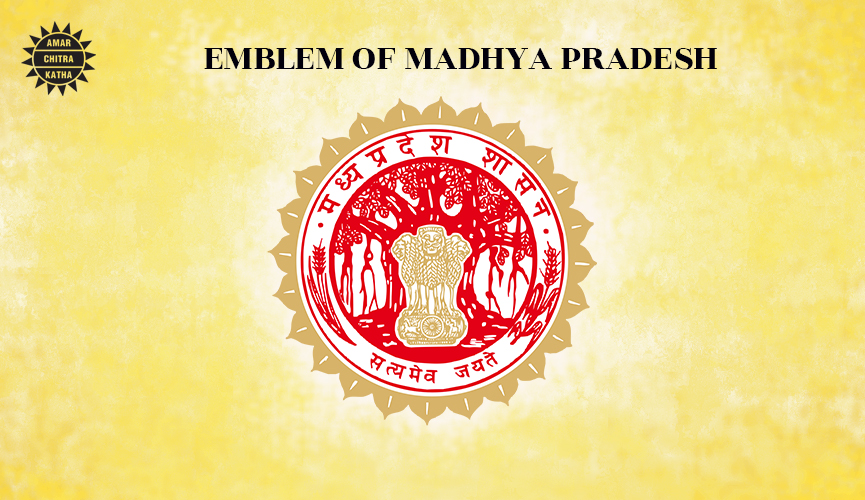
In the 16th century, most of present-day Madhya Pradesh was under the reign of the Mughal emperor, Akbar (1556-1605). During Mughal rule, Gwalior became a centre for music. The region also witnessed the rise of Gwalior Gharana, one of the oldest schools of Hindustani classical music. Tansen, the famous vocalist at Akbar’s court, was also from Gwalior. After the death of Aurangazeb, the grandson of Akbar, in 1707, the Mughal empire began to weaken. Due to this, the Marathas began to expand their territories in the 18th Century. Bajirao I, the 7th Peshwa (Prime Minister) of the Maratha empire, invaded the Mughal territories of Malwa and Gujarat. The Battle of Bhopal was fought between the Maratha Empire and Mughal forces led by Nizam of Hyderabad, near Bhopal in 1737. The Marathas were victorious and as a result, a large part of Malwa was surrendered to them.
In the late 18th and early 19th centuries, the British began to expand their dominions beyond Madras, Bengal, and Bombay. Between 1775 and 1818, three Anglo – Maratha Wars were fought. The British victory over the Marathas in the Third Anglo-Maratha War (1817-1819), helped the British East India Company suppress the empire and gain control over most of India. Most of the large and princely states of the region, including Indore, Rewa, Bhopal and Gwalior, came under British rule. The British annexed the state of Nagpur, which included regions belonging to present-day southeastern Madhya Pradesh, eastern Maharashtra, and most of Chhattisgarh, in 1953. During British rule, the princely states of Northern Madhya Pradesh were governed by the Central India Agency, a political unit of British India, created in 1854.
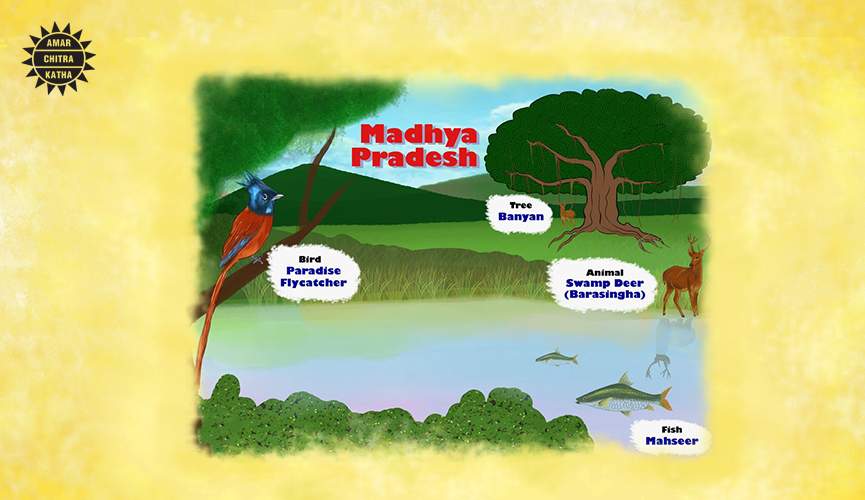
The region has been the battleground for several freedom fighters who sacrificed their lives for our nation. Tantya Bhil, from Khandwa district, Madhya Pradesh, was an active freedom fighter and a member of the Bhil tribe. He fought against British rule for twelve years and looted the government treasuries to distribute wealth among the poor and needy. Unfortunately, Tantya was captured and was hanged on 19 October, 1889. Another freedom fighter, whose bravery was witnessed in this region was Rani Lakshmibai. Rani Lakshmibai of Jhansi was one of the central figures in the First War of Indian Independence. After losing Jhansi to the British, Lakshmibai captured the Gwalior fort in Madhya Pradesh, with the help of Tatya Tope. She died while fighting bravely against the British forces near Gwalior, on 18 June, 1958. After the death of Lakshmi Bai, Tatya Tope continued his fight as a guerrilla fighter in the jungles. Unfortunately, he was imprisoned and hanged on 18 April, 1859. Another noted freedom fighter during the War of 1857, was Rani Avantibai Lodhi. She is remembered for her valiant fight against the British army using guerilla warfare. In the early 20th century, Chandra Shekhar Azad played a prominent role in the freedom movement. Along with Bhagat Singh and other revolutionaries, Azad secretly reorganised the Hindustan Republican Association (HRA), renaming it the Hindustan Socialist Republican Association, in 1928. Azad was martyred at the age of 24, after he shot himself to avoid being captured alive by the British forces, on 27 February 1931.
After India became independent in 1947, the new states of Madhya Bharat, Bhopal and Vindhya Pradesh were formed out of the Central India Agency. According to the States Reorganisation Act of 1956, the Hindi-speaking states of Madhya Bharat, Vindhya Pradesh and Bhopal were merged to become Madhya Pradesh. The Marathi-speaking region, Vidarbha, which included Nagpur, was ceded to Bombay State. Bhopal then became the new capital of Madhya Pradesh. Ravishankar Shukla, a leader of the Indian National Congress and an active participant in the Indian freedom movement, was elected as the first Chief Minister of the state. As a part of the Madhya Pradesh Reorganisation Act, the southeastern portion of the state separated to form the new state of Chhattisgarh in November 2000. Currently, Madhya Pradesh is bordered by the states of Uttar Pradesh to the northeast, Maharashtra to the south, Chhattisgarh to the southeast, Rajasthan to the northwest, and Gujarat to the west.
Madhya Pradesh’s economy is the 10th largest in India. The state has produced many famous journalists, authors and scientists, as well as a Governor of the Reserve Bank of India (RBI) and a Nobel Laureate. Raghuram Govindarajan is an Indian economist born in Bhopal, who served as the Governor of RBI from 2013 to 2016. Kailash Satyarthi from Vidisha, is a social reformer and the co-recipient of the Nobel Peace Prize, with Malala Yousafzai, in 2014. The state ranks 23rd among Indian states on the Human Development Index (HDI). Madhya Pradesh is rich in minerals and has the largest reserves of copper and diamond in India and has many tourist destinations to visit. The Khajuraho Temples, a UNESCO World Heritage Site; Bandhavgarh and Kanha National Parks, Gwalior, Orchha, and the Triangle destinations of Malwa: Mandu, Ujjain, and Omkareshwar are some of the desired tourist places of Madhya Pradesh. The state has also won the Best Tourism State National award for three consecutive years, i.e. 2015, 2016 and 2017.

By Srinidhi Murthy
Tallapaka Annamacharya was a 15th century Telugu composer and poet. Due to his contribution to Telugu literature, he is regarded as Andhra Pada Kavita Pitamaha (Grandfather of Telugu song-writing). Here are some interesting facts about the life and legacy of this legendary poet, whose songs are still popular among Carnatic music artists.
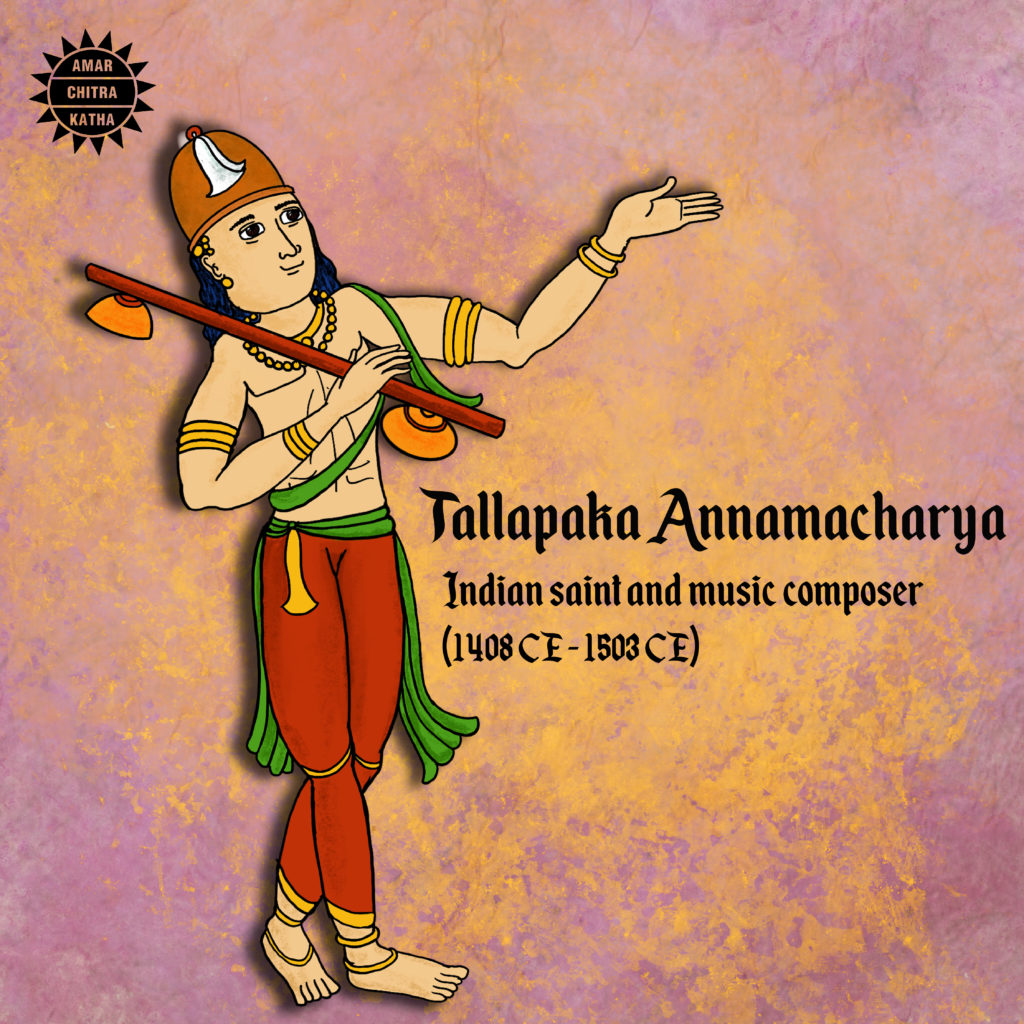
Annamacharya was born in Vaishakha Shuddha Pournami in the year Sarwadhari i.e. 22 May, 1408, in a village named Tallapaka, in the present-day Kadapa district of Andhra Pradesh. Annamacharya lived for 95 years, devoting his life to the praise of Lord Venkateshwara, and breathed his last in 1503. Insights on his life and works were found in a rhyming couplet of poems named Dwipada, written by his grandson Tallapaka Chinnayya.
Annamacharya was a devotee of Lord Venkateshwara and composed many songs in his praise, during his lifetime. The composer considered his songs as floral offerings for the Lord and surrendered himself in devotion to Venkateshwara. His devotion to the lord can be known through his song ‘Dachuko nee Padalaku thaga ne chesina’, meaning ‘O Lord! Safeguard them, for these are the result of the worship.’
Tallapaka Tirumalamma, the wife of Annamacharya, was also a famed poet. She is regarded as the first woman poet in Telugu literature. Her work named Subhadra Kalyanam (The Marriage of Subhadra) consists of 1170 poems in Telugu, about the marriage of Subhadra and Arjuna. She presented Telugu culture and nativity through the poems, which were taken from the Sanskrit epic Mahabharata.
Annamacharya wrote his sankeertanas (songs) on palm leaves. Later, his son Pedda Tirumalacharya engraved the works of his father on copper plates. Pedda Tirumalacharya and his son Tallapaka Chinnayya were also skilled poets and composers.
During his literary career, 32,000 keertanas (songs) were said to have been composed by Annamacharya. But only 12,000 of those keertanas are available today. Some of his famous Telugu compositions are Adivo Alladivo Srihari Vasamu (That is the place where Hari resides), Kondalalo Nelakonna (Situated in the hills), and Brahma Kadigina Padamu (The feet that were washed by Brahma).
Annamacharya was one of the first poets in Telugu literature who opposed social stigma toward the untouchable castes through his compositions. These sentiments were echoed in his well-known song Brahmaṃ Okkate (The divine and absolute power is one). He argued that the relationship between the god and human is the same irrespective of their financial status, caste, and colour.
The compositions of Annamacharya were lost and forgotten for over three centuries. Centuries after his lifetime, twenty-five hundred copper plates containing his songs were found in 1922. They were found inside the Sri Venkateswara temple at Tirumala, just opposite the ‘hundi’ (cash collection box), concealed in a small room. In 1949, Tirumala Tirupati Devasthanams (TTD) finally took possession of all the available copper plates. In 2005, an English translation of 150 of these verses was published.
Since the discovery of Annamacharya’s compositions, Tirumala Tirupati Devasthanams has been making every effort to promote and preserve the works of this legendary composer. In 1950, the Government of Andhra Pradesh created a committee and appointed the late musician Dr M. Balamuralikrishna as its head. In 1979, an album named Balaji Pancharatnamala was sung by singer M. S. Subbulakshmi. The album contained the compositions of Annamacharya like Vande Vasudevam, Bhavamulona, Sriman Narayana and many more. A statue of Annamacharya is situated at the Sarada River Park in Anakapalle, Andhra Pradesh. Another 10-story tall statue is located at the entrance of Tallapaka.
In 1997, a Telugu film named Annamayya was released, based on the life of Annamacharya, directed by K. Raghavendra Rao. In 2017, Brahmam Okate, one of Annamacharya’s compositions, sung by child singers Sooryagayathri and Rahul Vellal, became a huge hit. The YouTube video of the song garnered over 11 million views two years later, in 2019.

By Srinidhi Murthy
Indian musicians throughout history have reached great heights and gained global accolades with their talent and dedication. Here are the stories of some such musicians of the 20th century, who have made outstanding contributions to the field of music.

Annapurna Devi was born as Roshanara Khan on 15 April, 1927, at Maihar (in present-day Madhya Pradesh), a princely state of British India. Her father, Alauddin Khan, was a royal court musician at the court of Maharaja Brijnath Singh, who named the newborn girl ‘Annapurna’. Annapurna’s musical talent was spotted by her father when she corrected her elder brother, Ustad Ali Akbar Khan, during his sarod practice. She was initially trained in sitar and vocals by her father and she then switched to surbahar i.e. the bass sitar. Soon, she became an accomplished surbahar player and started guiding her father’s students including sarodist Ustad Bahadur Khan and sitarist Pandit Nikhil Banerjee. Annapurna Devi married Pandit Ravi Shankar, the renowned sitarist in 1941, and the couple had a son, Shubhendra Shankar. Annapurna Devi was one of the first female music instructors or gurus in modern times. The musician trained her son in sitar and guided other famous musicians such as flautist Hariprasad Chaurasia and sarodist Pandit Basant Kabra. In 1977, she received Padma Bhushan, the nation’s third highest civilian honour, and was the only surbahar player to be honoured with the Sangeet Natak Akademi Award, the highest Indian honour in performing arts. Annapurna Devi died at the age of 91, on 13 October, 2018, in Mumbai.
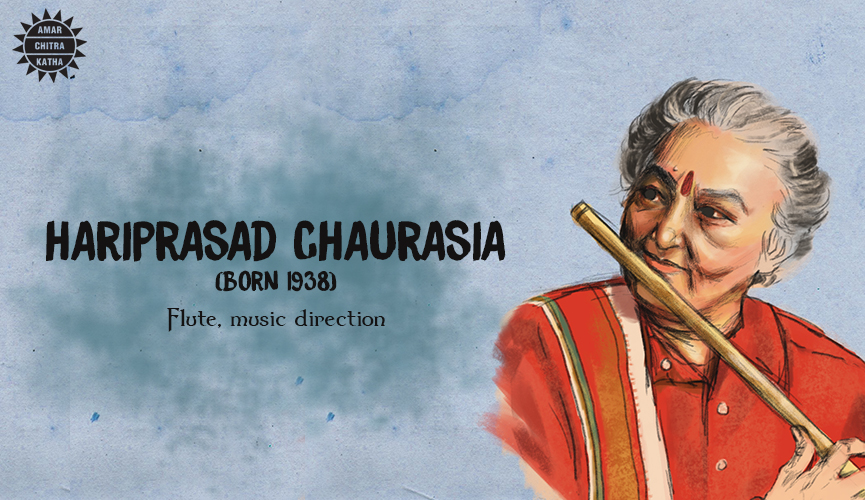
Hariprasad Chaurasia was born on 1 July, 1938, in Allahabad (officially known as Prayagraj now), British India. Chaurasia lost his mother at a young age and was raised by his father, who was a wrestler. Hariprasad learned his early music lessons discreetly in his friend’s house as his father wanted him to become a wrestler. Hariprasad later credited his father’s wrestling training for his ability to play the flute even after getting older. During his teenage years, he was trained by Pandit Bholanath, a noted flautist from Varanasi, for eight years. His music career started in 1957 when he joined All India Radio, Cuttack, Odisha, as a composer and performer. During this time, he was trained and guided by surbahar player, Annapurna Devi. Chaurasia also collaborated with santoor player, Shivkumar Sharma, under the name ‘Shiv-Hari’ and composed music for Hindi films. In 1967, he collaborated with legendary rock and roll band, The Beatles, and released a single named ‘The Inner Light’ in a Beatles album. His collaborations with musicians such as John McLaughlin and Jan Garbarek made him popular in the western world. Pandit Hariprasad Chaurasia has received numerous honours including the Padma Bhushan in 1992 and Padma Vibhushan in 2000, among others.
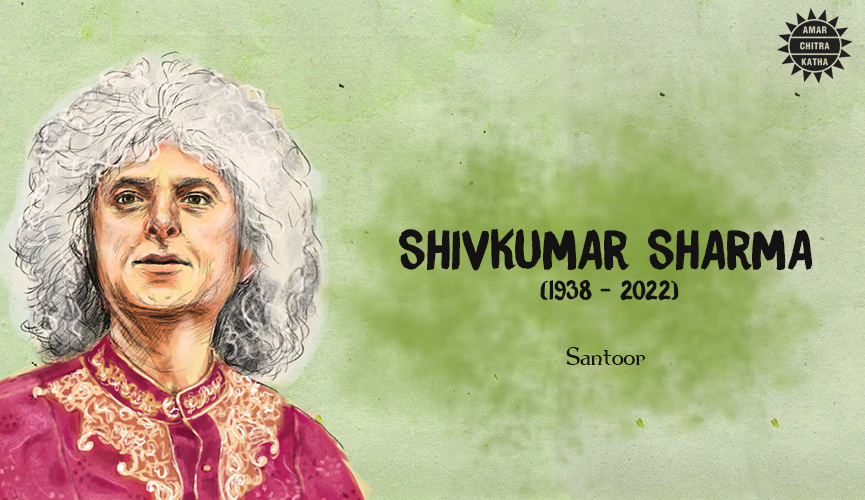
Born on 13 January, 1938, in Jammu, Shivkumar Sharma was an Indian santoor player. He is known for popularising the santoor, the 100-stringed folk instrument from Jammu and Kashmir, across the globe and elevating its status in Indian classical music. Sharma was trained by his father, who worked as a music supervisor at Radio Kashmir in Jammu, from the age of five. He started learning santoor from the age of thirteen. In 1955, at the age of seventeen, Sharma gave his first public performance in Mumbai. He went on to record his first solo album in 1960. He collaborated with flautist Hariprasad Chaurasia, under the name ‘Shiv-Hari’ and composed music for many Hindi films. He also collaborated with tabla player Zakir Hussain and guitarist Brij Bhushan Kabra, to produce music albums. His collaboration with Brij Bhushan Kabra for an album named ‘The Call of the Valley’ became one of the greatest hits of Indian classical music. The santoor virtuoso was the recipient of many prestigious awards, including the Sangeet Natak Akademi Award in 1986, the Padma Shri and the Padma Vibhushan in 1991 and 2001 respectively. Shivkumar Sharma died at the age of 84, on 10 May, 2022.

N. Rajam, an acclaimed Indian violinist, was born in Chennai in 1938. She initially received training in Carnatic music from her father, Vidwan A. Narayana Iyer and her brother, violinist T.N. Krishnan, who was a recipient of both Padma Shri and Padma Bhushan. Rajam also trained under Carnatic vocalists Musiri Subramania Iyer and Omkarnath Thakur. She started her career as a Hindustani classical violinist at the age of 15. Rajam is credited for introducing the style of Gayaki Ang, a technique of violin playing that captures the intricacies of vocal music. She has performed in various concerts, in India and across the globe. For nearly 40 years, Rajam was a professor of music at Banaras Hindu University (BHU) and she eventually became the dean of the Faculty of Performing Arts at the University. The violinist has played an active role in promoting classical music in Varanasi through the Pandit Omkarnath Music Foundation, of which she is the Founder-Chairman. She has been awarded prestigious accolades including the Sangeet Natak Akademi Award, the Padma Shri and the Padma Bhushan, for her contribution to music.
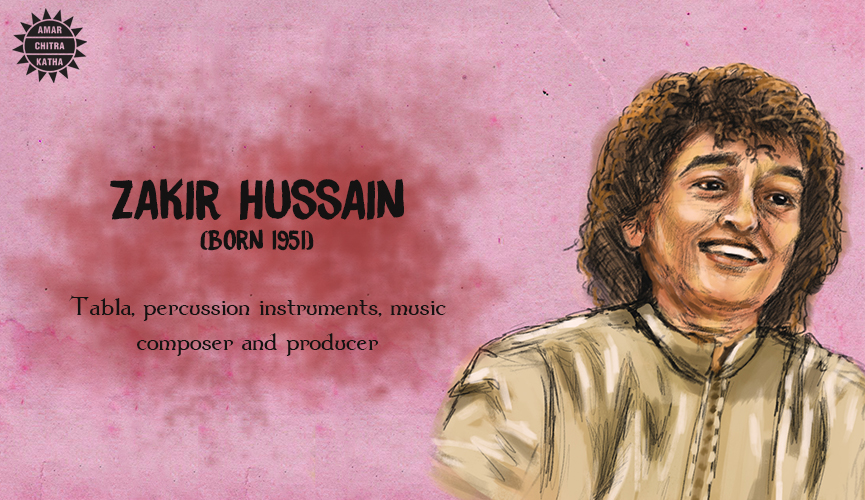
Zakir Hussain, an Indian tabla player and composer, is credited for bringing tabla to the world stage. He was born on 9 March, 1951, in Bombay (present-day Mumbai), Maharashtra. Hussain was naturally inclined towards tabla since his childhood, as his father, Ustad Allah Rakha, was a renowned tabla player. He also learnt to play the Mridangam, a classical percussion instrument, from his father, when he was just three years old. Hussain began to perform at concerts at the age of twelve. He graduated from St. Xavier’s University in Mumbai and received a doctorate in Music from the University of Washington. Hussain has also collaborated with both Indian and western musicians such as John McLaughlin, Shivkumar Sharma, and Lakshminarayana Shankar, also known as L. Shankar, which has granted him fame and recognition across the globe. In 2016, he became the first Indian musician to be invited by the then-American President, Barack Obama, on International Jazz Day. He was honoured with the Sangeet Natak Akademi Award in 1990 and was the youngest percussionist to be awarded the Padma Shri and the Padma Bhushan, in 1988 and 2002, respectively.
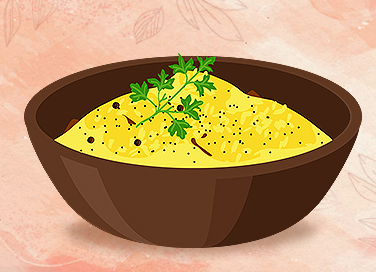
By Dheer Sanghi
Khichdi is one of India’s most widespread and popular dishes, made in a variety of ways over several regions, mostly situated in the North. Made with rice and lentils, khichdi is very easy to make and has high nutritional value. It is also commonly given to babies as their first solid food due to their soft texture.
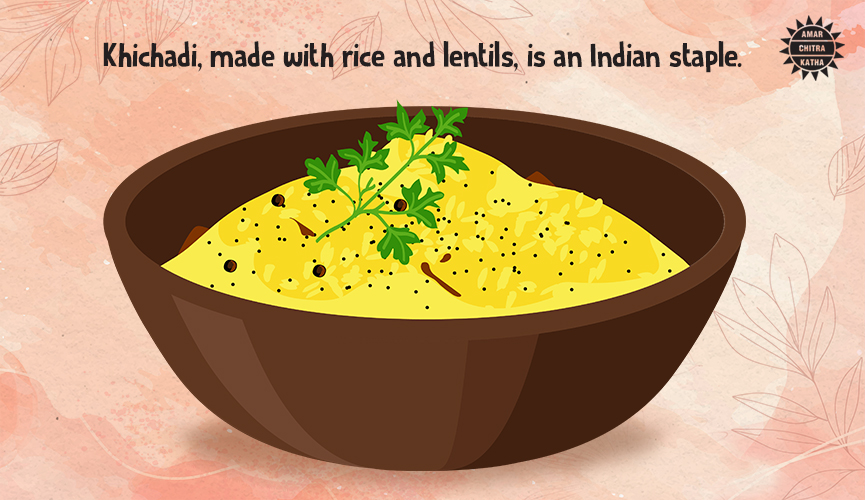
This everyday staple food crops up throughout Indian mythology. One such story is about God Shani’s love for khichdi made with black lentils. It is said that his mother, Goddess Chhaya, performed extreme penance when he was in her womb, going without food and water for days, and practising severe austerity under the blazing sun. This made the baby in the womb dark, but not before he inherited great powers due to his mother’s penance. For this reason, it is believed that Shani loves dark-coloured foods, especially khichdi!